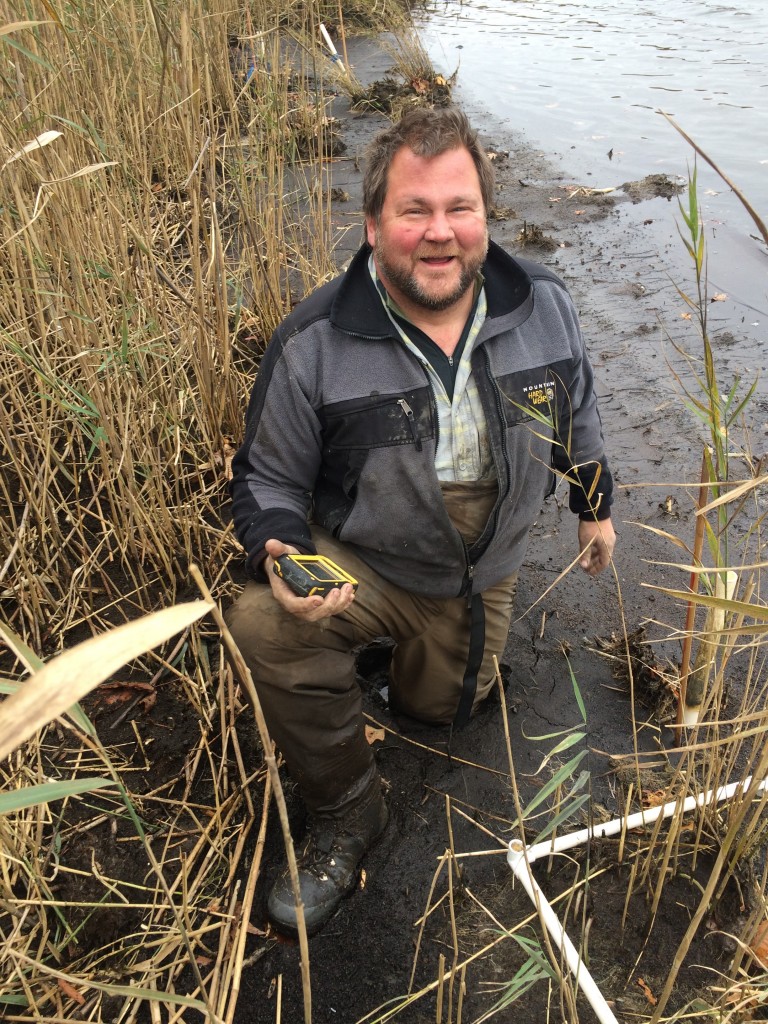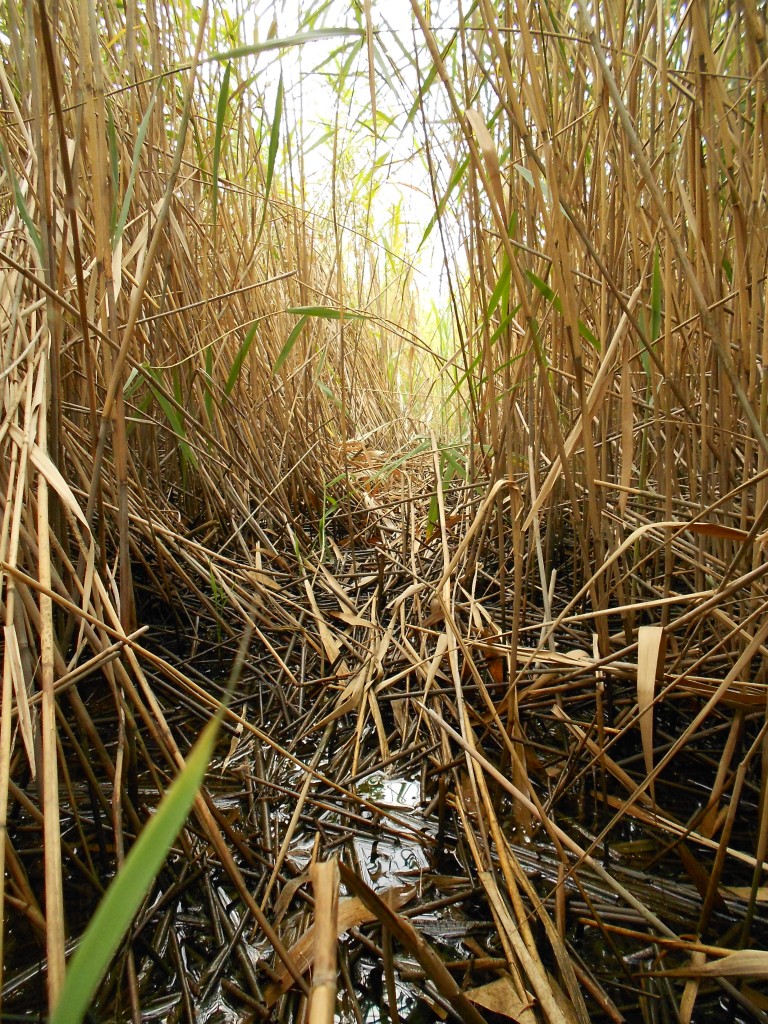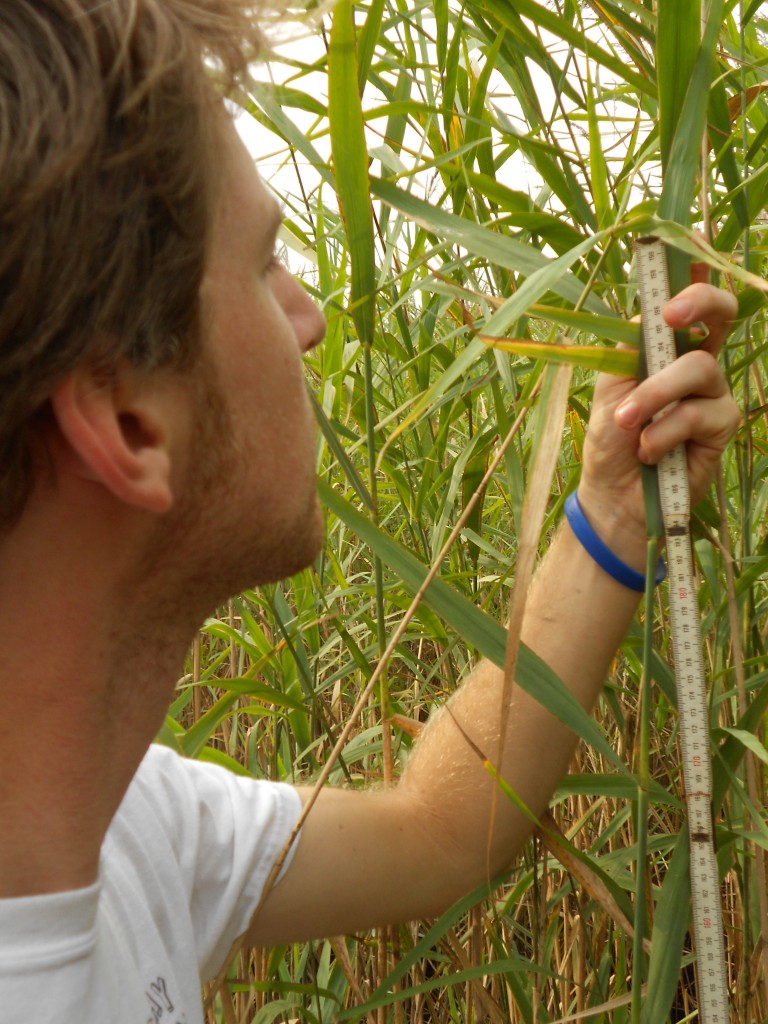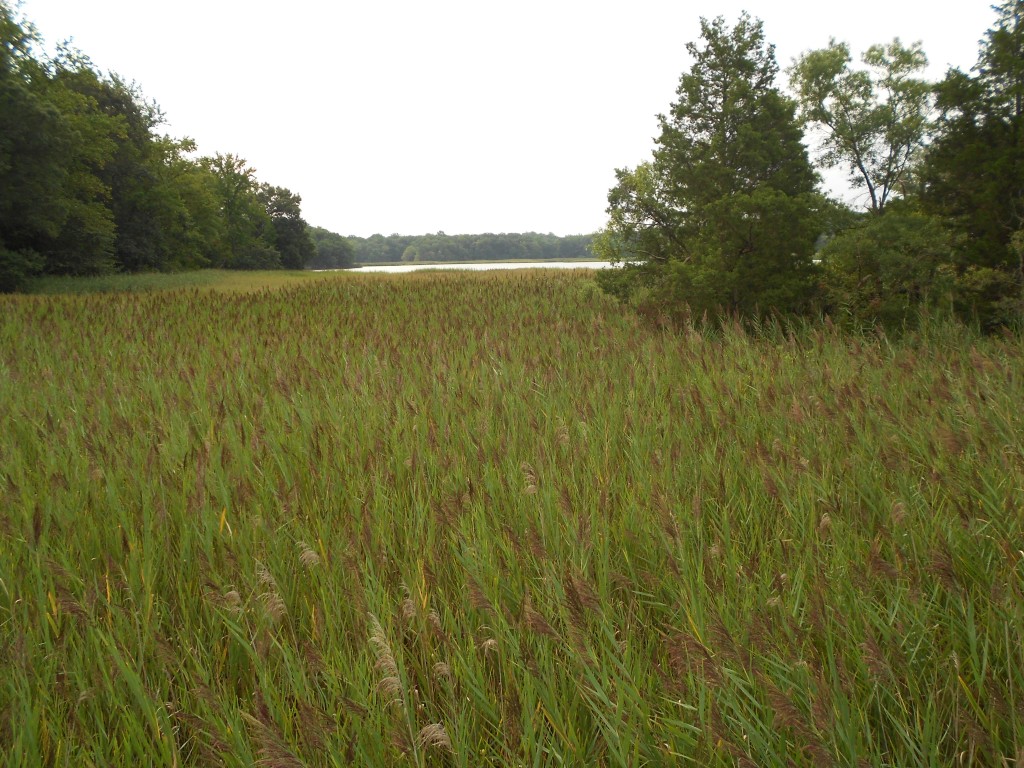
Eric Hazelton in a Phragmites patch on the Nanjemoy River in Maryland. (Rebekah Downard of Utah State University)
by Chris Patrick
On crime scene investigation shows, DNA forensic scientists sit in a darkened room, wearing lab coats and clutching clear vials over dramatic music. In a matter of hours, they conjure perpetrators to the scene of a crime or prove relations between separated kin simply from remnants of genetic material.
Researchers in the Plant Ecology and Molecular Ecology Labs at the Smithsonian Environmental Research Center (SERC) published a paper in July in Wetlands that has more in common with a CSI episode than you’d expect—though in their case, the process took months instead of hours.
There’s a strain of Phragmites australis, the common reed, that’s native to North America. But the population of an invasive strain from Europe, introduced in the 1800s, suddenly boomed without warning in wetlands around the Chesapeake Bay in the 1980s. SERC scientists had some ideas about what might have caused the sudden explosion, so the team attempted to recreate the history of this sudden, aggressive invasion to test their theories.
“We tried to look at every aspect of a plant invasion and tried to measure everything that could change within an invasion over time,” said Eric Hazelton, former SERC fellow, doctoral candidate at Utah State University, and one of the paper’s authors.
The team assessed the robustness, insect damage, and types of plants in old and young Phragmites patches. “We found that with invasions that are 10 years old, they’re essentially the same as invasions that are 50 years old,” said Hazelton. “Nothing changed.”
Or so it seemed. When the team turned to DNA, they found differences in genetic diversity between old and young patches. Extracting DNA from Phragmites leaves, the team identified the number of genetically distinct clones in every patch.
Phragmites is a clonal species that can reproduce two ways: asexually through specialized roots, making genetically identical clones, or sexually with seeds.
To assess genetic diversity within and among patches, SERC ecologist Dr. Melissa McCormick, who did most of the molecular work, determined how many distinct clones were in each patch and how closely related they were.
The DNA revealed that there were more distinct clones in young patches (established after 1990) than in old patches (established before 1971). Old patches, however, were more distinct from patch to patch, whereas young patches were more similar to one another. These differences in genetic diversity led to two possible histories, which aren’t mutually exclusive.
In one history, the older patches were established independently by rare, single seeds that happened to wind up in a marsh. “It took a long time for multiple old patches to get established,” said McCormick.
When another patch started growing close enough to these established patches, they started making seeds with each other. And that’s when Phragmites began to explode, forming more diverse, younger patches.
Additionally, the older patches may have started out with more distinct clones, but lost some of that diversity over time as the clones competed against one another for resources. “Both things are likely happening,” said Hazelton.
Like forensic scientists, the team used evidence from the environment to unearth events of the past. But DNA work is never as easy in real life as it is on television, especially when Phragmites is involved. The team plodded through tall, dense, humid Phragmites patches to collect samples, dodging sharp-edged leaves and battling the heat.
This research started as the summer project of former intern Matt Sievers. Sievers, currently a research technologist at Johns Hopkins University School of Medicine, did a lot of the fieldwork and helped conceptualize the project. SERC senior scientist Dr. Dennis Whigham and Dr. Karin Kettenring of Utah State University also contributed to this study.
Understanding Phragmites’ recent explosion may also help prevent its future spread. In some areas, “you can have a couple of patches that are present that have been there for a long time that really aren’t doing anything,” said McCormick. “But it’s just a matter of time before another genotype gets in.” Meaning it could be just a matter of time before these patches start producing seeds and spreading like the Phragmites in other areas.
The key is catching Phragmites before the older patches can form the younger patches. “Once Phragmites comes in and get established, it’s just there,” McCormick said. “And it’s really there. It’s there and not much else is.” Determining how to manage this invader will be more complicated than tidy T.V. endings, but at least the team doesn’t have to put up with that dramatic music.
Learn more:
Jekyll or Hyde? The Many Faces of Phragmites
Phragmites vs. Climate Change: Invasive Reed Better at Taking Up Carbon
Invasive Plant May Protect Forests From Drowning





Just wondering why this is not a good thing for stabilizing the shore line, decreasing erosion , and filtering sediment much like the mangrove trees down south
That’s a good point. Some SERC ecologists consider Phragmites a “Jekyll-and-Hyde” plant for exactly that reason. It’s great at preventing erosion and building soil elevation (to counteract sea-level rise), but not so great for everything else that lives on the marsh.